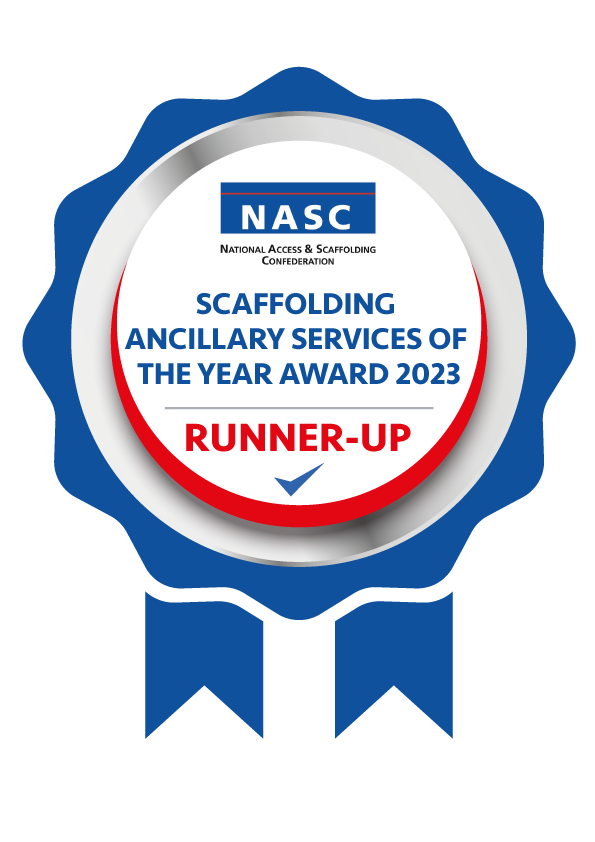Building Safer Heights: Tackling Falls with Better Scaffolding Practices
Building Safer Heights: Tackling Falls with Better Scaffolding Practices
Falls from heights remain one of the most dangerous risks in the workplace, particularly in industries like construction, where working at height is an everyday requirement. Despite stringent regulations and safety protocols, these incidents continue to be the leading cause of workplace fatalities and injuries.
In the UK, falls from height caused 36% of workplace deaths in 2023/24, a 22% rise from the previous year (51 deaths vs. 41). This highlights the urgent need for better safety measures and management to prevent such accidents.

This issue spans various sectors, but construction bears the brunt, accounting for over half of all fall-related fatalities in the UK. Beyond the devastating loss of life, these incidents result in hundreds of thousands of serious injuries and a substantial number of lost workdays.
Key Statistics:
- 51 deaths in 2023/24 due to falls from height, up from 41 the year before.
- 425,000 serious falls were reported across all industries over the past decade.
- 992,000 lost working days caused by these incidents.
These figures emphasise that falls from height are a critical workplace risk that demands urgent attention. But what exactly causes these accidents?
Causes of Falls from Heights:
Despite strict regulations, falls still happen due to:
- Lack of Fall Protection – Missing or misused safety gear.
- Inadequate Training – Workers unaware of risks.
- Poor Planning & Supervision – Unsafe task execution.
- Faulty Equipment – Damaged ladders, scaffolding, or lifts.
- Hazardous Conditions – Wet floors, clutter, or bad weather.
- Unsafe Practices – Overreaching or mishandling tools.
While the Work at Height Regulations 2005 require safe scaffolding design and construction, compliance alone is not enough to prevent accidents. The solution lies in better monitoring and proactive safety management.

Enhancing Fall Prevention with Technology:
Technology is revolutionising workplace safety, offering digital solutions to monitor risks, improve communication, and ensure compliance. Inspection and handover management systems play a crucial role in streamlining safety processes.
Key Features of Inspection Tools:
- Detailed Checklists: Ensure scaffolding, ladders, and harnesses meet safety standards.
- Real-Time Issue Reporting: Instantly flag and resolve safety concerns, like damaged guardrails.
- Data Tracking: Monitor inspections and incidents to identify trends and improve safety.
- Enhanced Collaboration: Digital platforms keep teams informed and aligned on safety measures.
Benefits of Handover Management Systems:
- Pre-Work Risk Assessments: Identify hazards and take preventative action before work begins.
- Centralised Safety Records: Digital access to safety protocols keeps everyone informed.
- Task Assignments: Clear delegation of safety responsibilities reduces oversights.
- Incident Analysis: Simplified reporting helps organisations learn from past incidents and enhance future practices.
By integrating these technologies, workplaces can create safer environments and reduce fall-related risks.

Creating a Safer Work Environment:
Addressing the risks of working at height requires more than compliance with regulations. It involves fostering a proactive safety culture supported by modern tools and consistent training. By embracing technology to monitor and manage workplace risks, businesses can significantly reduce the likelihood of falls.
Organisations that prioritise safety create environments where workers feel secure and valued. This not only protects lives but also improves productivity and morale, ensuring that workers can perform their duties confidently and efficiently.
A commitment to continuous improvement in safety practices ensures that every worker returns home safe and sound at the end of the day. Together, we can make workplace safety a shared responsibility and priority. For reliable and secure scaffolding solutions, explore how SMART Scaffolder can support your workplace safety initiatives.
Recent posts
Why Tie Testing Matters: Staying Compliant with NASC TG4:25
October’s Project of the Month: Amphibian Scaffolding at Chartwell Hockley Industrial Centre
Why Harness Inspections Matter: Staying Compliant with NASC SG16:23
September’s Project of the Month: OAK Scaffolding Limited: Caterham School
Why the Scaffolding Industry Must Embrace Technology
August’s Project of the Month: SAY Access Limited at Appleton Academy
Sustainability Through Innovation in Construction:
Project of the Month: July – JRS Scaffolding
Case Study: Transforming Scaffold Inspections at Enigma Industrial Services
Bridging the Skills Gap in Scaffolding: How Technology Can Attract the Next Generation
Project of the Month – June – Blenheim Palace
SMART Scaffolder’s 20th Anniversary event
Engineering Smart Solutions in Tight Spaces: PJ Slater’s Stamford & Rutland Hospital Project
Why Every Scaffolding Company Needs a Strong GRC Framework –
Sonic Scaffolding 2000 ltd is driving Project Success with SMART Estimator’s Accurate 3D Planning
Infiniti Scaffolding LTD: Boosting Efficiency with SMART Inspector: A Success Story
The Future of Scaffolding Workflow software
SCA Group’s Centenary Quays Project: Project of the Month January 2025
Battling the Elements: How to Keep Your Scaffolds Safe in Adverse Weather
Navigating Scaffold Safety: The Critical Importance of Handover Certificates





